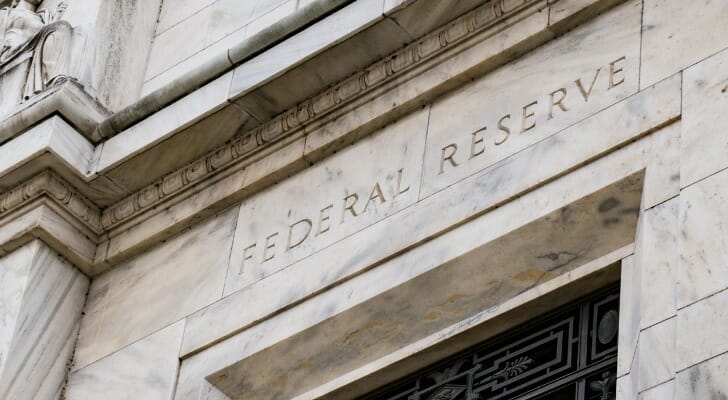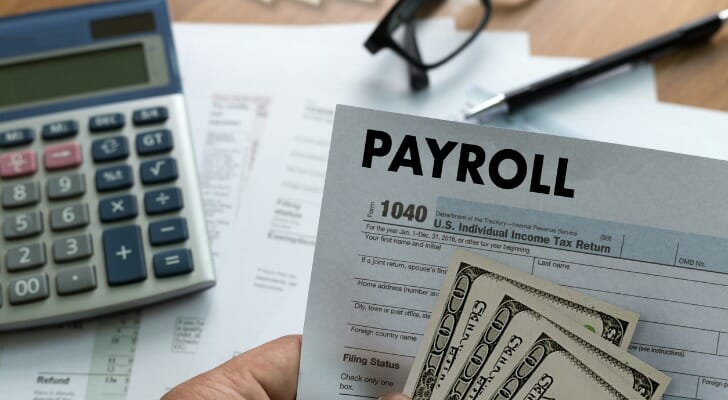To be a business owner during the coronavirus pandemic is to be in serious financial straits. That is, unless you’re in the business of selling groceries, medicine, other essentials or streaming services. As the country reopens in fits and starts, Main Street is not expected to rebound right away. The lost revenue, for big and small businesses, is unprecedented, as is the number of people filing for unemployment (roughly 50 million initial claims filed from mid-March to mid-July!). To help you get through the crisis, SmartAsset has put together this guide to all relief programs available to small business owners, including what’s in the Coronavirus Aid, Relief, and Economic Security Act (CARES) Act – and the latest stimulus package. While staying in business has never been harder, billions in federal and state aid are available with lower-than-usual barriers.
Table of Contents
Make sure your financial plan can handle these uncertain times.
Talk to a financial advisor today.
Coronavirus Small Business Relief Programs

Paycheck Protection Program (PPP) Loans
The PPP loans small businesses 2.5 times their average monthly payroll costs (excluding pay in excess of $100,000 per employee), up to $10 million. The forgivable loans aim to incentivize small businesses to maintain their head count and payroll… read more

PPP Loan Calculator
Small business owners now want to know how much money they can borrow under the Small Business Administration’s Paycheck Protection Program (PPP). This PPP calculator helps… read more

PPP Loans: Lender List and Requirements
As they struggle to survive mandated restrictions, small business owners are scrambling to secure Paycheck Protection Program loans. If you’re looking for a lender, start with this list… read more

The Fed’s Main Street Lending Program
The Federal Reserve is stewarding the Main Street Lending Program, using funds from the CARES Act, to help small businesses during the ongoing COVID-19 crisis and accompanying economic downturn… read more

Economic Injury Disaster Loans (EIDLs)
The SBA’s Economic Injury Disaster Loan program, which the CARES Act expanded upon, provides loans of up to $2 million to disaster-affected small businesses and private non-profit organizations that encounter certain declared disasters… read more

Express Bridge Loan Pilot Program
In response to COVID-19, the SBA expanded the Express Bridge Loan Pilot Program, which provides up to $25,000 loan financing to small businesses in disaster-ridden communities… read more

Payroll Tax Delay
The CARES Act allows employers to postpone their 2020 payroll taxes through the end of 2022… read more

Employee Retention Tax Credit
The Employee Retention Tax Credit (ERTC) is a provision in the CARES Act that incentivizes employers to keep employees on payroll during the economic downturn. It is a credit that employers can receive for up to 50% of qualified wages paid to employees, including qualified health plan costs… read more

SBA 7(a) Loans
The SBA’s 7(a) program is an existing loan program available to small businesses. Separate from the Paycheck Protection Program (PPP), 7(a)loans can be for up to $5 million and are guaranteed by the SBA for between 75% and 85% of the loan…. read more
Additional Small Business Relief Programs

- Community Advantage Loan Program
- Using the same general rules as the 7(a) program, Community Advantage loans are for up to $250,000 and are for businesses in underserved markets. The loan application is here.
- Express Loan Program
- The Express Loan Program is a type of 7(a) loan. These loans are for up to $350,000 and are guaranteed at 50% by the SBA. The decision to make the loan is up to the lender rather than the SBA, and is made within 36 hours. Again, the PPP may make more sense if you are dealing with fallout from the COVID-19 crisis, but these express loans are also an option. These loans are given by local lenders.
- 504 Loans
- Microloans
- Microloans are made through non-profit lending organizations to underserved markets. Loans can be for up to $50,000 and the average loan size is $14,000. Find a local microloan provider here.
- SBA Debt Relief Program
- The SBA Debt Relief Program gives immediate relief to borrowers with existing SBA 7(a) loans, 504 loans and Microloans. For these existing borrowers in regular servicing status, the SBA will cover loan payments (principal, interest and associated fees) for six months. This relief is also available for businesses that take out new loans prior to September 27, 2020. This debt relief is automatic, and lenders have been instructed not to collect loan payments. Call your lender if you have any questions.
For federal small business relief programs, you qualify based on the size of your business. Your small business must have 500 or fewer employees. Private nonprofits and 501(c)(19) veterans organizations also qualify. It’s possible for some companies with more than 500 employees to qualify if they align with the SBA’s size standards for certain industries. In addition, hospitality and food industry businesses could qualify at each location with fewer than 500 employees even if the overall business employs more than 500 people.
Your business qualifies if the “current economic uncertainty makes the loan necessary to support your ongoing operations,” according to an SBA fact-sheet. This language is vague, and three weeks into the program, the Treasury clarified that this means you do not have access to financing, which rules out many publicly traded companies. The Treasury and SBA also announced that all loans more than $2 million will be audited when determining if they are eligible for forgiveness.
Normally, there are much more stringent requirements and documentation, but the loans offered under the CARES Act are being given under looser guidelines. This is to allow banks and other lenders to get money to companies quickly so they can cover things like rent and payroll.
There are also individual state and local programs, described below, each of which has its own guidelines. The size varies by state. For instance, in San Francisco the business must have less than $2.5 million in revenue while in Delaware the number is $1.5 million. Some programs are based on the number of employees a business has — one program in New York, for instance, is for businesses with less than 100 employees.
There are also private programs available. For instance, Inspire360, a learning management system for the fitness and wellness industry, is offering fitness professionals $1,000 to 500 applicants. For more details, click here.
How Much Do I Get?
The size of these loans largely depends on what you ask for and what you need. Paycheck Protection Program loans are for up to $10 million or two and a half times a company’s average monthly payroll costs. EIDLs are for up to $2 million, though the Small Business Administration has capped the initial disbursement at $15,000 per applicant for two months. This is due to the high volume of applications. The cap, however, is in addition to the $10,000 forgivable advance that is now limited to $1,000 per employee for companies with less than 10 employees (so if you have five employees, your advance is only $5,000.)
How Do I Apply?
To get a loan under the Paycheck Protection Program, you’ll need to talk to a local lender, such as a bank or credit union, that participates in the SBA’s 7(a) loan program. Due to the initial huge demand, many banks are restricting applicants to current business customers. That said, the deadline for the program was August 8, and it is no longer taking applications as of August 9. Roughly $136 billion remains in untapped funding though, so we will update this story if Congress passes legislation to reopen the program.
For an EIDL, you apply with the SBA. As of June 15, it began accepting new applications again.

Money Management Tips For Small Business Owners
- If you’re worried about your small business during the COVID-19 crisis, a financial advisor can help. Finding the right financial advisor who fits your needs doesn’t have to be hard as you strategize to protect your small business. SmartAsset’s free tool matches you with financial advisors in your area in five minutes. If you’re ready to be matched with local advisors that will help you achieve your financial goals, get started now.
- The government’s coronavirus economic support includes paid sick leave, an employee retention tax credit, a tax deadline extension and many other forms of aid for individuals and businesses. But as you manage your business, don’t forget about yourself and the possibility that you’ll receive a COVID-19 stimulus check. Our coronavirus stimulus check calculator can help you determine how much you may receive.
- Several other establishments are providing relief to individuals and businesses who’ve sustained financial loss because of coronavirus. See our full list of companies helping coronavirus-impacted people.
Photo credit: ©iStock.com/Gwengoat, ©iStock.com/Kameleon007, ©iStock.com/djedzura
How Do I Qualify?
